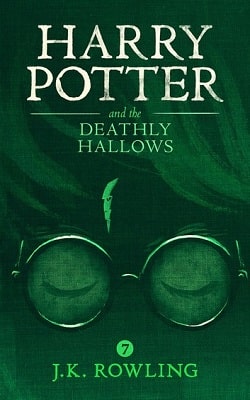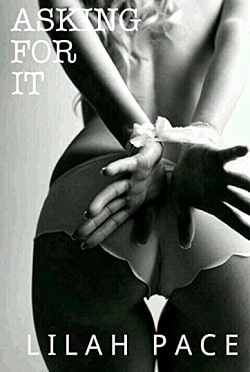And so I did. Gripping the bag’s tightly cinched neck, I untwisted the plastic-coated twist tie and laid it aside, then slowly lifted the bottom of the bag. Clattering and clanking, the contents tumbled out: Tin cans. Plastic bottles and jugs. Bags and wrappers and pouches of paper, foil, cellophane.
Where to begin? Did it even matter, my arbitrary starting point, since I’d be sifting and sorting and scrutinizing the whole mess? “Eeny . . . meeny . . . miny . . . moe,” I said, my gloved index finger tapping a flattened milk jug at “moe.” Starting with the milk jugs made good sense, I realized. For one thing, they were the largest items, so examining them first would shrink the trash heap the fastest, creating at least the illusion of rapid progress, as well as freeing up counter space for sorting the smaller items. Best of all, though, the pull dates on the cartons might tell me when the young man’s captivity had begun . . . and when his feeding, and his life, had ceased.
“Okay, Moe, tell me your story,” I commanded the first crumpled plastic milk jug. I picked it up by the edges, rather than the handle, on the off chance that the TBI crime lab, to which I would relay everything, might be able to coax a DNA sample or a latent print from the surface. The latter seemed doubtful; the container’s textured plastic was the sort of print-defying surface I’d heard forensic technicians curse countless times. Still, it never hurt to try. “You have to try,” I reminded myself, quoting from a Lyle Lovett song. “What would you be if you didn’t even try?”
The jug’s paper label had peeled off—it was probably curled or wadded up elsewhere in this portable trash midden—but I didn’t need a label to identify the brand. A glance at the yellow polyethylene and the circular medallions embossed on the jug’s sides told me that the milk had been bottled by Mayfield, an East Tennessee dairy that was headquartered just fifty miles south of Knoxville, in Athens. Mayfield operated a large distribution center in West Knoxville, beside Interstate 40. For decades, the industrial-looking building was elevated from eyesore to quirky landmark by the larger-than-life figure of Maggie, an immense fiberglass Jersey cow. Twelve feet high by twenty feet long, endowed with forty-gallon udders, Maggie stood serenely on a large flatbed trailer alongside I-40. Her location and her wheels made it easy for Mayfield to herd Maggie to county fairs and cornbread festivals . . . and also made it relatively simple for pranksters to borrow Maggie from time to time, during fraternity initiations or other alcohol-fueled rites of passage. Maggie had, alas, been put out to pasture in recent years, retired to Mayfield’s original dairy farm, which was now open to tourists and school groups. I missed her, and I suspected the UT fraternities did, too.
The jug’s pull date, printed by a dot-matrix printer around the neck, read “Sell by 10/03/16.” I blinked, stunned—He couldn’t have been alive two weeks ago, I thought—but then I looked again and saw that I had misread the year: the fading ink read 2013, not 2016. That, too, was puzzling, though, given that it seemed clear—from the lack of leaf litter atop the bones—that the death had occurred only a few months before, perhaps during summer. Removing the jug from beneath the hood, I raised it toward my face, sniffing as I did, ready to thrust it back into the exhaust the moment I caught the stench of sour milk. But I never did, even when the open spout was practically touching my nose. Water, I realized: The jug had been rinsed out and used to store water. I set it on a table behind me and reached for another jug.
This one—translucent and colorless, not Mayfield yellow—didn’t require the sniff test, as it had flecks of clotted milk clearly visible within the hollow handle. It also had a far more recent pull date: May 29, just five months before. The remaining half-dozen jugs followed the same pattern as the first two: three of them were clean, odorless jugs, stamped with pull dates ranging from six months to three years earlier; the other three stank of sour milk, and bore dates ranging from May 17, the earliest, to June 24, the latest. Chained in the woods for six weeks, I calculated. God in heaven.
Next I tackled the cans—a few beer cans, but mostly an assortment of pull-top tins of processed meats, including, I grimaced to see, cheap dog food. The cans, whose contents were supposedly tasty for years, were less informative than the milk jugs, so I gave each one only a quick look before setting it aside. Next came a series of crumpled wrappers and bags: Slim Jim meat sticks. Lay’s Potato Chips. Armour Star Bacon. McDonald’s Egg McMuffin—a delicacy consumed by the killer, I suspected, who didn’t seem the sort to waste a warm, tasty breakfast sandwich on a victim he sometimes fed dog food. Three Red Man Tobacco foil pouches, whose contents likewise had probably gone into the killer’s cheek: chewing tobacco was a luxury item, an indulgence, which almost surely would not have been offered to the captive victim, except, perhaps, in the form of a stream of brown spittle, delivered to the face and followed with an insult.
I set the beer cans, the Egg McMuffin wrapper, and the Red Man pouches to one side. I would package those separately for the TBI lab, in hopes that the killer’s mouth had contacted their surfaces and left behind a trace of telltale DNA. A cigarette butt might have done the job also, but apparently our perpetrator preferred saliva to smoke as his nicotine delivery system.
After I’d removed the jugs, the cans, the wrappers, and the bags, very little was left. A foil chewing-gum wrapper. A whiskey bottle. An empty Altoids tin. And, oddly, two sticks of deodorant—or, rather, two empty deodorant dispensers, their labels peeling and tightly curled. Why on earth . . . , I wondered. It seemed inconceivable that the victim had been provided with toiletries to keep him smelling fresh during his ordeal in the woods. But it also made no sense that our tobacco-chewing perpetrator would be attending to his own personal hygiene at the scene of the crime, either. If he had been, why stop with deodorant? Where were the empty toothpaste tubes, the nail clippers, the dental floss?
On a whim—curious about what brand of deodorant might appeal to the sort of person who would chain a young man in the woods for weeks—I gave the deodorant a tentative sniff. It didn’t smell like my own “sport” fragrance, nor like baby powder, nor lavender, nor any other deodorant I’d ever smelled. It smelled pungent, like rancid meat. Involuntarily I made a face, then gave the curled label a tug to remove it from the dispenser. As I held the paper in my upturned palm and smoothed it flat, it gave a sudden flutter, then—caught by the exhaust hood’s rising column of air—it fluttered upward and plastered against the mesh screen guarding the fan. “Crap,” I muttered, switching off the fan. As the spinning blades slowed, the label detached from the screen and drifted down, landing faceup on the soiled steel counter.
I read the label—once, twice, three times—and then heard myself whispering, “Son of a bitch. You sick, sick sonofabitch.”
Then I dialed Sheriff O’Conner to tell him we were looking at a case of carefully planned, meticulously executed murder.
“Bear bait,” I told O’Conner when he asked how I knew. “The victim was smeared with bear bait. ‘ConQuest Scent Stick. Smoked Bacon,’ the label says.” I had a sudden realization, and I spun around to the table where I’d piled the empty cans and wrappers to confirm that I was remembering correctly. Armour Star, the plastic wrapper still cloudy with grease. “There was actual bacon, too—raw bacon. When I saw the package, it didn’t make sense—all those empty cans, all that processed food, but raw bacon? Why would he feed the kid raw bacon? But he wasn’t feeding it to him.”
“Lord, Doc, are you saying what I think you’re saying?”
“He wasn’t feeding it to him,” I repeated. “He was coating him with it. The killer turned that kid into living, breathing bear bait.”
CHAPTER 7
I WAS IN MY ADMINISTRATIVE OFFICE EARLY THE next morning, huddled over the mountain of paperwork that had somehow accumulated on my desk during the hours I’d spent sifting through Beanee Weenee cans and bear-bait sticks.
I was just starting to flip through the annual inventory of Anthropology Department property—a twenty-page list of stuff that, apart from the equipment i
n the new DNA lab and the Body Farm’s processing facility, was worth about fifty bucks—when my door burst open. “You!” exclaimed Miranda, coming toward me at a brisk clip. “You are unbelievable.”
“Come on, Miranda,” I said. “You’re still mad at me? I told you how sorry I was.”
She had already made it across the room and around the end of the desk; she kept closing the distance, until she was directly beside me. “You are unbelievably wonderful.” She bent over, threw her arms around my neck, and gave me a quick hug, which—given that she was standing above me—felt more than a little awkward, from where I was sitting. Mercifully, she turned me loose quickly. “How on earth did you do that?”
“Do what?” I asked. I wasn’t just playing coy; I honestly didn’t know what she meant.
“The director of the FBI Laboratory—the head honcho, the big cheese—he came looking for me. He walked in on my job interview about five minutes after it started.”
“What for?”
Her eyes narrowed with suspicion. “He said he’d heard I was interviewing. Wanted to be sure he had a chance to meet me, since he’d heard ‘such glowing things’ about me. He grilled me for twenty minutes, then shook my hand and said he thought they’d be lucky to get me.”
“Well, well,” I said. “Mr. Big Cheese is clearly a smart guy. Does he have a name?”
She rattled it off, then added, “As if you didn’t know.”
“Actually, I didn’t,” I said honestly. “Never heard of him. Pretty cool, though, that he’s heard of you.”
“Are you telling me you didn’t call him yesterday morning, after I left in a huff?”
I raised my right hand, my first three fingers nestled together and pointing upward, my pinkie and thumb folded and touching each other. “Scout’s honor. How could I call him if I don’t even know his name?”
“But you called someone at the FBI lab yesterday morning.”
“No, I didn’t call someone at the FBI lab,” I said. Then, realizing that Brubaker now worked for an outside consulting firm, I said, “As a matter of fact, I didn’t call anyone anywhere in the FBI.” I made a mental note to phone Brubaker again and thank him for his swift, miraculous intervention. It’s possible that I wasn’t entirely successful at hiding my sense of relief and self-satisfaction at how I’d managed to redeem myself, because Miranda gave me a look of knowing triumph. She appeared to be formulating her next question—if Miranda had studied law rather than anthropology, she’d have made a damned good prosecutor—so I parried, hoping to derail her cross-examination.
“Hey, did you see Chip Thornton while you were there?”
Miranda flushed. “No, I did not see Chip Thornton while I was there.”
Thornton was an FBI agent specializing in weapons of mass destruction. He’d been sent down from FBI headquarters several years before to work with us on a murder committed with a powerful radiation source, and at the time, I’d noticed some serious sparks crackling between him and Miranda. “Oh well,” I said, all innocence. “Too bad. He’s a nice guy. Maybe if you go to work for the Bureau, you’ll cross paths with him.”















